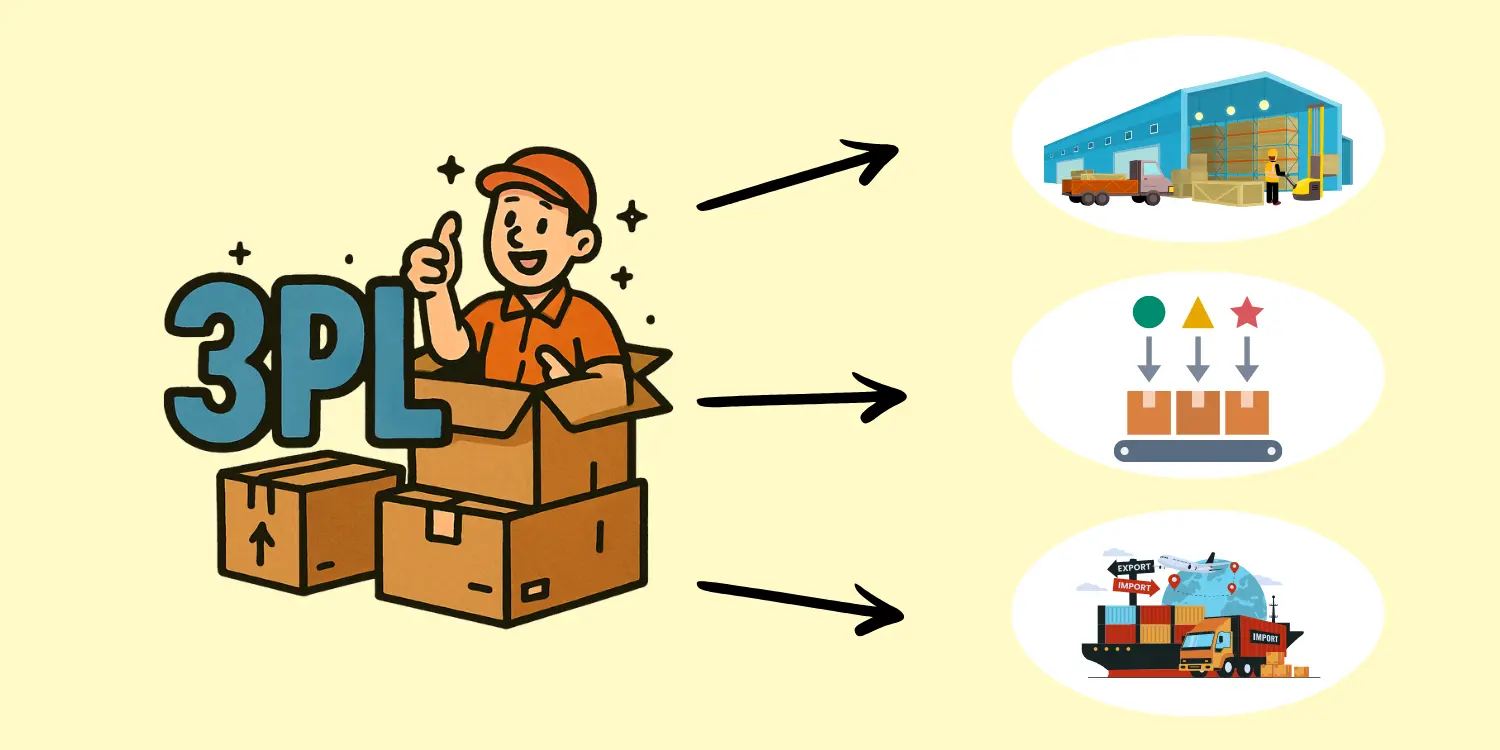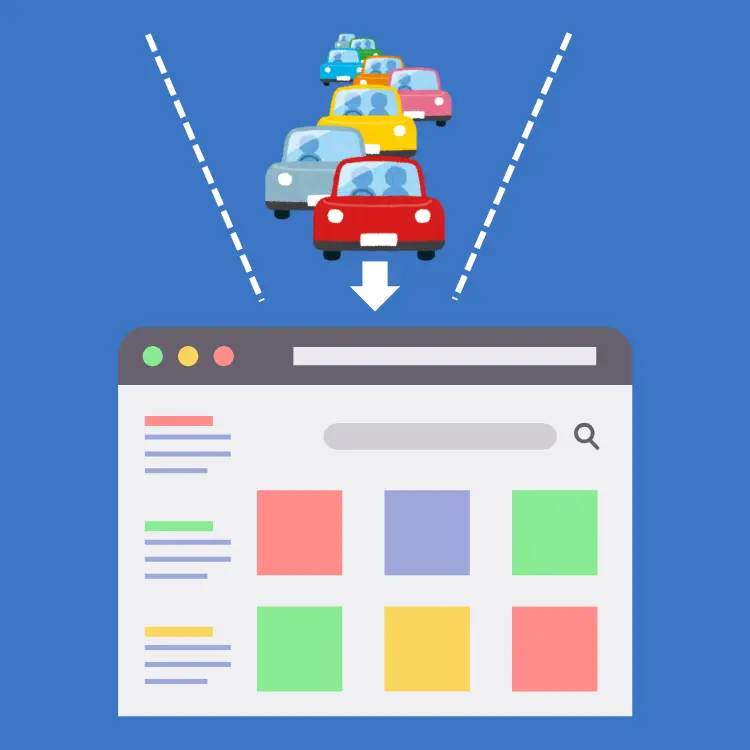
Your D2C brand is an immensely strong chain made of tightly, strengthened links of tech tools, operations, and logistics that define how your business succeeds in an overly saturated market. Choosing a third-party logistics (3PL) partner isn’t just another procurement task or something you leave to a spur-of-the-moment decision.
The right 3PL partner can shape the trajectory of your D2C brand for years and decide if you make it past three years. The right warehouse and fulfillment partner should serve as a strategic extension of your team, unlocking your brand's potential to build, market, and scale operations effectively.
But, make the wrong call, and you’ll be fighting hidden expenses, missed benchmarks, and frantic customer support tickets. Here’s how to get it right for your firm based on what's critical for growth in 2025.
[cta-btn title="Build Your Brand And Become A Member" link="/membership-pricing"]
Put simply, a 3PL partner (short for Third-Party Logistics partner) is a company that businesses hire to handle parts (or even sometimes all) of their supply chain and logistics operations. So, instead of you taking your valuable time to manage warehousing, shipping, and fulfillment in-house, your company can effectively outsource those responsibilities to a 3PL provider.
4PL (Fourth-Party Logistics) refers to a logistics partner that manages and oversees the entire supply chain for a business. Think of 4PL like a mini-you, almost as if you were able to clone yourself for operations tasks, and have that clone then coordinate multiple 3PLs, carriers, warehouses, and technology systems.
The TL;DR, a 4PL partner acts as a single point of contact between your company and all the logistics providers, with a focus on strategy, optimization, and cost efficiency (so you can do more important things).
[single-inline-tool]
For most growing D2C brands, a 3PL (Third-Party Logistics) is the go-to choice and the most frequent option we see selected at 1-800-D2C.
[pro-con][pro]
[/con][/pro-con]
A 4PL (Fourth-Party Logistics) is less about warehouses and trucks, and more about end-to-end supply chain management.
[pro-con][pro]
[con]
Switching 3PLs isn’t a simple swap. Most times it's a multi-week or multi-month project with real risks and opportunity costs. But, if you find the right partner, you have more time to branch into new acquisition channels and campaigns to grow your e-commerce business.
The best 3PLs offer:
Most RFPs fixate on sticker price, warehouse count, or flashy logos. Savvy D2C operators know those are just table stakes. Here are 10 under-the-radar but critical dimensions to probe before you sign:
Ever wondered why your fulfillment cost keeps inching up? The answer is usually buried in the fine print: storage minimums, pick/pack surcharges, relabeling, cycle counts, packing material markups.
Checklist:
Almost every 3PL claims simple CMS e-commerce integration or “Shopify integration.” But what’s beneath the buzzwords? True API muscle means inventory, order edits, tracking data, and address fixes sync in real-time with your OMS.
Why it matters: Even a 15-minute webhook lag or broken API can trigger oversells and nightmare post-purchase experiences, especially on drop days. Worst case scenario is it leads to customer data leaks, which can set your brand back even further.
You'll need to understand where your partner is in relation to your target audience. More buildings aren’t always better. Two nodes in Pennsylvania and Nevada could beat a scattered network of five. The goal is to minimize ship-to zones and transit times to where the majority of your buyers are.
Pro tip: Ask for a customer geography heatmap, not just a facility count or square footage. This will give you a much better understanding of their capabilities.
Need to launch a flash sale, subscription bundle, or creator collab kit? The right 3PL pivots without a lengthy engineering process and gives you fast turnaround.
Evaluate:
ESG is no longer just a “nice to have.” Retailers and customers look for sustainable packaging.
Strong signals: In-house inventory of recyclable or compostable mailers, dissolvable void fill, or eco-friendly ice packs—and the ability to provide data for ESG reporting.
Reverse logistics are a profit lever, not an afterthought. A robust returns flow—photo confirmation, grading, repairs, and instant refunds—can mean the difference between profitable TikTok launches and a mountain of dead stock.
Get real data and stats Ask for actual last Black Friday stats:
A Good Sign: If they share real (anonymized) WMS screenshots. Vague answers? Move on.*
Natural disasters, freak accidents, and server outages happen. The real question: Does your 3PL have active redundancy and business continuity processes in place? Only a handful can actually swing your orders to another site or move inventory quickly in a pinch. Don’t get caught with all inventory stuck in a single zone during peak shopping season.
You shouldn’t have to wait until Friday’s report or PDF rolls in to see where orders went off track or logistics fell through. Real 3PL partners provide daily, autonomous, self-serve dashboards showing:
Work styles matter. Some 3PLs assign a dedicated, KPI-driven account manager, and open up a shared Slack or support channel, while others make you email or chat ticket your way through a help desk queue. You'll want to match their comms style (and time zone) to how your team works best.
The best-fit 3PL isn’t just about service capabilities, but also about alignment with your brand’s workflow, values, and pace. Here’s a practical process to stack the odds in your favor so that your brand succeeds.
Watch closely for:
If it feels off during evaluation, it will be 10x worse after you go live.
We can't drive this home enough: Moving to a new 3PL typically requires a 2 to 3 month runway.
Track and diligently measure hard metrics from day one: order accuracy, shipping speed, fulfillment cost per order, and (most important) customer satisfaction.
Stay coordinated with your 3PL, especially in the early weeks. Schedule regular check-ins, share honest feedback, and keep escalation paths visible for all parties involved.
A modern 3PL partnership isn’t transactional, it’s foundational. Look for a partner with the drive, transparency, and agility to scale quickly with your growth, not just checkoff the basics. You'll want to prioritize real-time KPIs, partner-brand cultural fit, and the ability to pivot quickly. Stack these criteria against your shortlist, and you’ll spot the true long-term partners before anyone signs the paperwork and your partnership is set in stone.
[inline-cta title="Discover More With Our Resources" link="/resources"]

Shipfusion is the ultimate partner for rapidly scaling DTC brands. With 99.97% SLAs and 97.9% retention, kiss fulfillment headaches farewell for good.


